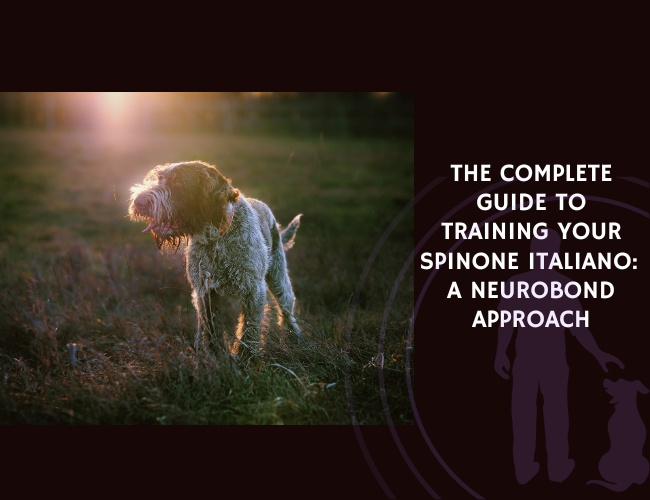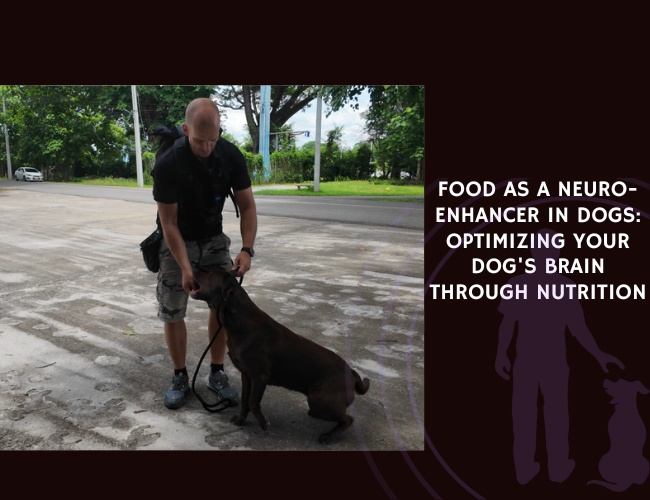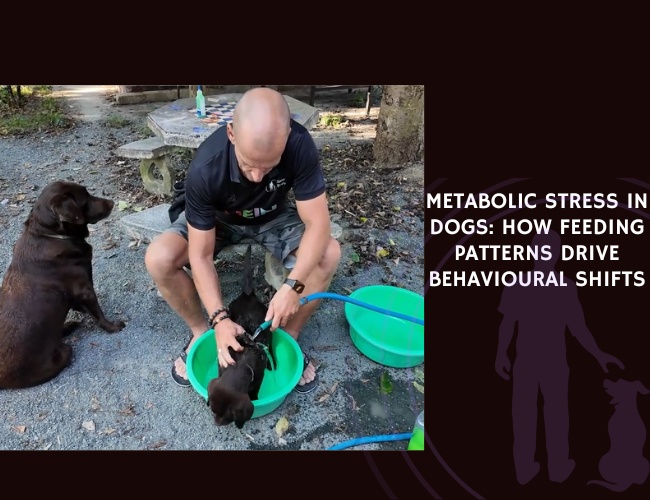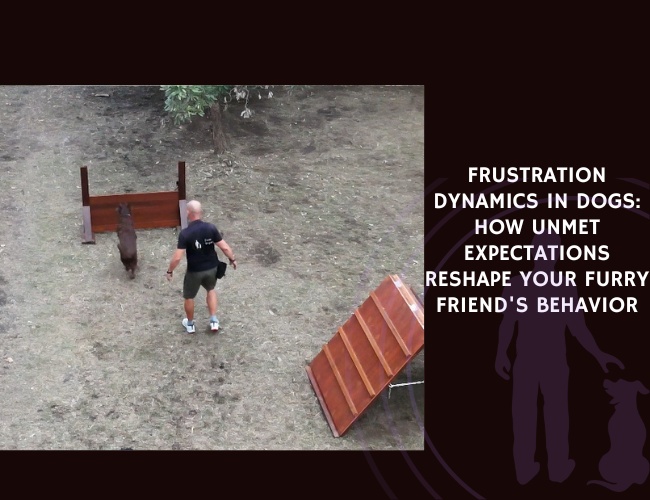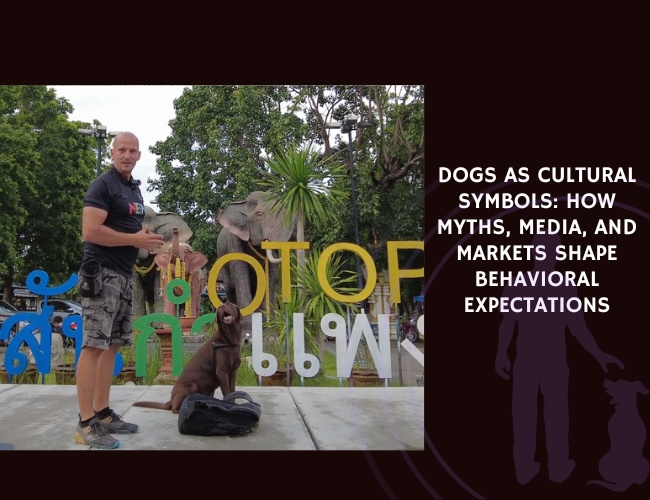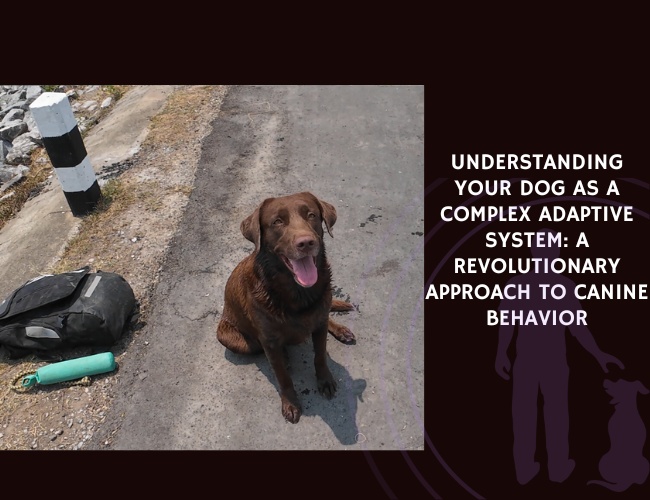Introduction
The Spinone Italiano carries within its ancient bloodlines a paradox that has puzzled trainers for centuries: a dog of remarkable intelligence who chooses when to demonstrate it, a devoted companion who maintains an aristocratic independence, and a gentle soul wrapped in the body of a tireless hunter. This unique combination isn’t a training challenge—it’s an invitation to understand how connection, rather than control, unlocks the Spinone’s true potential.
Dating back to ancient Italy, where they worked the marshlands and mountains alongside hunters who understood that partnership meant more than obedience, the Spinone developed a working style that prioritizes thoughtful problem-solving over blind compliance. Today’s Spinone owners often find themselves frustrated by traditional training methods that seem to bounce off their dog’s patient, methodical nature. But what if we told you that your Spinone’s “selective hearing” and clownish avoidance tactics aren’t defiance—they’re actually sophisticated communication attempts waiting for the right response?
The NeuroBond approach recognizes what centuries of Italian hunters knew instinctively: the Spinone thrives when allowed to be himself, when his natural behaviors are guided rather than suppressed, and when training becomes a conversation rather than a monologue. Let us guide you through a training philosophy that transforms your Spinone’s independence into partnership, their sensitivity into strength, and their humor into a bridge for deeper connection.
Character & Behavior: Understanding Your Spinone’s Operating System
The Thoughtful Processor
Your Spinone Italiano isn’t slow—he’s thorough. When you give a command and notice that characteristic pause, that moment where those soulful eyes seem to look through you rather than at you, you’re witnessing something remarkable: a dog whose amygdala processes emotional and contextual information alongside the simple mechanics of the command. This neurological trait, refined through centuries of hunting work where split-second decisions could mean the difference between success and failure, means your Spinone evaluates not just what you’re asking, but why, when, and whether it makes sense in his current context.
This processing style directly connects to the NeuroBond principle of letting the dog be himself. Rather than forcing rapid compliance, we work with the Spinone’s natural rhythm. When he pauses after a recall command, he’s not being stubborn—he’s calculating distance, assessing environmental factors, and determining the most efficient response. By allowing this processing time without repetition or frustration, you validate his intelligence and build trust.
The Sensitive Soul Behind the Clown Mask
The Spinone’s famous sense of humor—that clownish behavior that emerges especially when they’ve done something they shouldn’t have—is actually a sophisticated emotional regulation strategy. Neurologically, this represents activity in the prefrontal cortex attempting to defuse tension through social engagement. When your Spinone “pretends” not to understand a command he’s performed hundreds of times, he’s not being defiant; he’s communicating discomfort with something in the current situation.
This sensitivity requires us to create what we call “emotional scaffolding” in training. Every interaction becomes an opportunity to reinforce the emotional connection that forms the invisible leash. A Spinone who trusts that his emotional state is recognized and respected becomes a Spinone who chooses compliance because the relationship matters more than the momentary impulse to ignore.
The Independent Thinker
Unlike breeds developed for close-quarter work, the Spinone evolved to work at distance, making independent decisions while maintaining connection with their hunter. This creates what behavioral scientists call “proximal independence”—the ability to work autonomously while remaining emotionally tethered. Your Spinone’s brain literally has enhanced neural pathways between the problem-solving centers and the social bonding regions, allowing him to think for himself while caring deeply about your approval.
Understanding this helps explain why traditional dominance-based training fails so spectacularly with Spinoni. They don’t need a “pack leader”—they need a trusted partner who respects their intelligence while providing clear, consistent guidance. 🧠
Vocalization & Communication: How Your Spinone “Talks”
The Language of Selective Response
When your Spinone exhibits “selective hearing,” he’s actually demonstrating sophisticated discrimination learning. His brain actively categorizes commands based on context, urgency, and perceived necessity. That moment when he “ignores” your call while sniffing an particularly interesting spot? His olfactory bulb is processing up to 100,000 times more information than you can perceive, and his brain is making a cost-benefit analysis about interrupting this data stream.
The NeuroBond approach doesn’t fight this selective response—it works with it. By understanding that every “ignored” command is actually feedback about the strength of your connection versus the strength of the competing stimulus, we can adjust our approach. Instead of raising our voice or repeating commands, we change the equation by making ourselves more interesting than the distraction.
Body Language: The Subtle Communicator
The Spinone’s body language operates on micro-expressions that many owners miss. A slight shift in ear position, a barely perceptible change in tail carriage, or a subtle weight redistribution can signal major emotional shifts. These aren’t random movements—they’re precise communications evolved over centuries of working partnership with humans who paid attention.
Key signals to recognize:
- The Thoughtful Freeze: When processing a command, the Spinone often becomes completely still except for the eyes. This isn’t defiance—it’s deep cognitive processing.
- The Humor Tell: Before engaging in clownish behavior, watch for the slight tail wiggle combined with a specific head tilt. This is your warning that your Spinone is about to use humor to deflect.
- The Connection Check: Spinoni regularly perform subtle “check-ins”—brief eye contact, slight body orientation toward you, or a pause in activity. These are trust-building moments that should always be acknowledged.
Vocal Expressions
While not excessive barkers, Spinoni have a rich vocabulary of grumbles, sighs, and soft woofs that communicate emotional states. The low grumble during training isn’t aggression—it’s commentary, often translating to “I understand but I’m not convinced this is necessary.” These vocalizations are part of the dialogue, not disruptions to be silenced. In the NeuroBond framework, we listen to these expressions as valuable feedback about the dog’s emotional state and adjust accordingly.
Training & Education: Building the Invisible Leash
Phase 1: Establishing the NeuroBond Foundation
Before any formal training begins, we must establish what neuroscientists call “secure attachment”—the emotional foundation that makes all learning possible. For the sensitive Spinone, this phase is crucial and cannot be rushed. We’re not just building trust; we’re creating new neural pathways that will become your dog’s default response system.
Start with presence, not commands. Spend time simply existing in the same space as your Spinone without asking anything of him. Let him observe you, approach you, and retreat without consequence. This isn’t passive time—you’re actively building the neurological foundation for future training. Your calm, consistent presence triggers oxytocin release in both you and your dog, literally creating the chemical bonds that will later translate to training success.
The “Standing on the Leash” exercise works brilliantly with Spinoni because it respects their need to find their own solutions. When you stand on the leash with just enough length for your Spinone to sit or lie down comfortably, you’re not forcing anything. You’re creating a context where the most comfortable solution is also the desired behavior. When he figures this out—and he will, given his problem-solving nature—the resulting dopamine release reinforces not just the behavior but the process of working with you to find solutions.
Phase 2: From Connection to Communication
Once the emotional foundation is solid (typically after 2-3 weeks of consistent bonding work), we begin shaping behaviors through what we call “conversational training.” This isn’t about commands and compliance—it’s about creating a shared language.
The Check-In Protocol: Spinoni naturally perform check-ins when they trust their human. We simply capture and reinforce these moments. Every time your Spinone looks at you voluntarily, mark it with a soft “yes” and reward—not with food initially, but with acknowledgment. A smile, a gentle touch, a quiet “good.” This builds the habit of seeking connection, which becomes the invisible leash.
Context-Based Learning: Instead of drilling commands in isolation, we teach behaviors within natural contexts. Recall doesn’t start in the backyard—it starts every time your Spinone naturally returns to you. We capture these moments, name them, and gradually shape them into reliable behaviors. This approach particularly suits the Spinone’s preference for practical, sensible learning over abstract obedience.
Phase 3: Structured Communication Within Relationship
Now we introduce what traditional trainers would call “commands,” but in the NeuroBond framework, these are “collaborative cues”—invitations to participate in shared activities rather than demands for compliance.
The Methodical Sit: When teaching sit, respect the Spinone’s processing time. Cue once, then wait. That pause you see isn’t defiance—it’s your dog’s brain creating the neural pathway from cue to action. If you repeat the command during this processing time, you actually interrupt the learning process. Wait for the full cycle: hear cue → process meaning → decide to comply → execute behavior → receive reinforcement.
The Thoughtful Recall: Spinoni often fail at recall not because they don’t understand, but because the traditional recall doesn’t respect their working style. Instead of demanding instant response, we teach a “check-in recall”—your dog acknowledges the call, makes eye contact to confirm, then returns at their natural pace. This respects their autonomy while ensuring safety and connection.
Leash Walking as Dialogue: The Spinone’s natural gait is a steady, purposeful trot—fighting this rhythm creates frustration for everyone. Instead, we teach “connected walking” where the leash becomes a communication line, not a restraint. Gentle pressure suggests direction changes, release rewards attention, and the walk becomes a conversation about shared exploration rather than a battle for control. 🐾
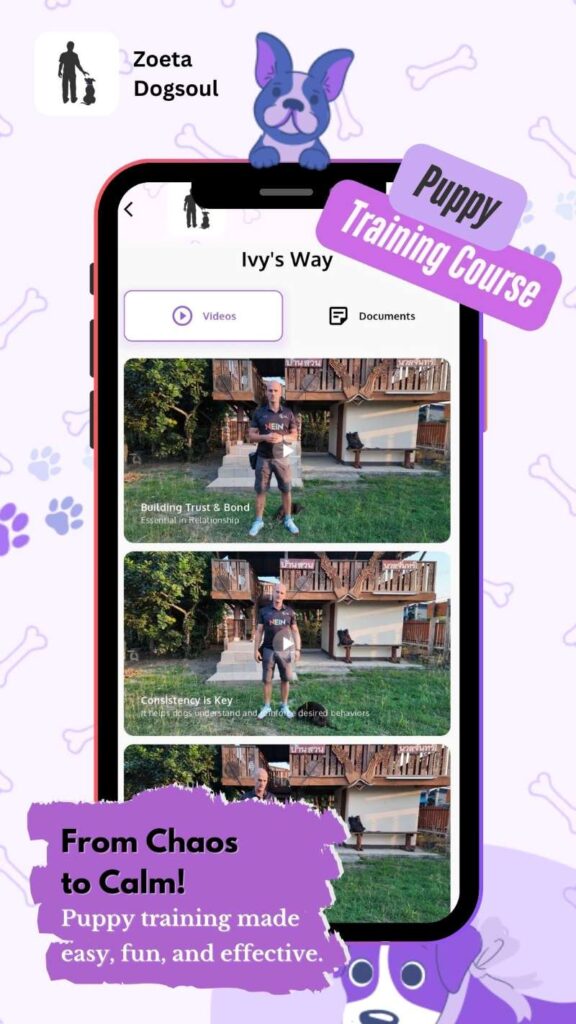
Performance & Activities: Channeling the Heritage
Unlocking the Working Dog Within
The Spinone’s brain is wired for complex, purposeful work. Generic obedience exercises often fail to engage the sophisticated neural networks developed for hunting, tracking, and retrieving. When we provide activities that tap into these inherited patterns, we see dramatic improvements not just in performance but in overall training responsiveness.
Scent Work as Mental Architecture: The Spinone’s olfactory processing capabilities are extraordinary—their brain dedicates significantly more neural real estate to scent processing than most breeds. Structured scent work doesn’t just give them something to do; it literally lights up their brain in ways that create lasting positive associations with training. Start with simple find-it games using their regular kibble, but progress quickly to more complex scent discrimination exercises. You’ll notice that a Spinone who’s been engaged in scent work is more responsive to training in all other areas—the mental satisfaction creates a spillover effect.
Retrieving With Purpose: While not as driven as traditional retrievers, Spinoni have a soft mouth and natural retrieving instinct that, when properly channeled, becomes a powerful training tool. But here’s the key: make it meaningful. Random fetch isn’t enough. Create retrieving scenarios that tell a story—hide the dummy, create drag trails, vary the difficulty. Your Spinone’s problem-solving centers engage, and suddenly that “selective hearing” disappears because the work matters.
The Patience Paradox in Performance
Your Spinone’s steady, methodical pace isn’t a limitation—it’s a superpower waiting to be recognized. In agility, while they’ll never match the speed of a Border Collie, their careful precision and low error rate often result in better overall performance. In the NeuroBond framework, we celebrate this measured approach rather than trying to speed it up.
Structure activities that reward thoroughness over speed:
- Precision Obstacles: Set up exercises where accuracy matters more than time
- Problem-Solving Courses: Create scenarios requiring thought before action
- Endurance Challenges: Leverage their incredible stamina for long-duration activities
Nutritional Recommendations: Feeding the Thinking Dog
The Neurobiology of Nutrition
The Spinone’s thoughtful, sensitive nature isn’t just behavioral—it’s biochemical. Their brain requires steady glucose levels to maintain the kind of sustained cognitive processing they naturally engage in. Irregular feeding schedules or poor-quality nutrition can literally impair their ability to learn and respond to training.
Optimal Feeding for Training Success:
- Morning Fuel: A protein-rich breakfast 2-3 hours before training sessions provides the amino acids necessary for neurotransmitter production
- Training Treats: Use single-ingredient, high-value rewards that don’t cause blood sugar spikes. Freeze-dried liver, small cheese cubes, or boiled chicken work better than commercial training treats
- Post-Training Recovery: A small protein snack after intensive training helps consolidate learning through improved memory formation
The Connection Between Gut and Behavior
Recent research reveals that the gut-brain axis plays a crucial role in behavior and trainability. Spinoni, with their sensitive nature, are particularly susceptible to gut-related behavioral changes. A diet rich in prebiotics and appropriate fiber supports not just digestive health but emotional regulation—critical for a breed that processes stress through their sensitive nervous system.
Consider incorporating:
- Fermented vegetables (small amounts)
- Bone broth for gut lining support
- Omega-3 fatty acids for cognitive function
- B-vitamins for nervous system support
Health Concerns: When Medical Meets Behavioral
Spinocerebellar Ataxia and Training Adaptations
This genetic condition, while not common, can significantly impact training when present. Early signs might be mistaken for stubbornness or lack of coordination. Understanding the neurological basis helps us adapt training appropriately:
- Modified Physical Exercises: Focus on mental challenges rather than physical precision
- Supportive Surfaces: Use non-slip mats during training to provide security
- Patience Multiplied: Processing time may increase; adjust expectations accordingly
- Success Redefinition: Celebrate effort and intention, not just execution
The Anxiety-Sensitivity Connection
Spinoni often manifest anxiety through increased sensitivity rather than obvious stress behaviors. A Spinone who suddenly becomes “more stubborn” might actually be experiencing low-grade anxiety that interferes with cognitive processing. The NeuroBond approach addresses this by strengthening the emotional foundation before attempting to modify behavior.
Signs of anxiety affecting training:
- Increased “selective hearing”
- More frequent clownish deflection
- Longer processing times
- Decreased treat motivation
- Subtle avoidance behaviors
Address through:
- Shortened, successful sessions
- Environmental management
- Increased bonding activities
- Possible veterinary consultation for underlying health issues
Steady. Sensitive. Sovereign.
A processor, not a rebel. Your Spinone’s thoughtful pauses aren’t defiance—they’re deliberate evaluations shaped by centuries of hunting alongside humans. Respecting that rhythm builds trust instead of conflict.
Humor with purpose. The clownish antics mask a deeply sensitive nature, where playful gestures often emerge as emotional regulation. Understanding the joke means understanding the dog behind it.

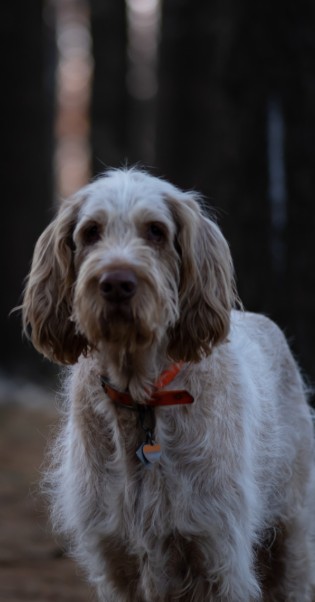
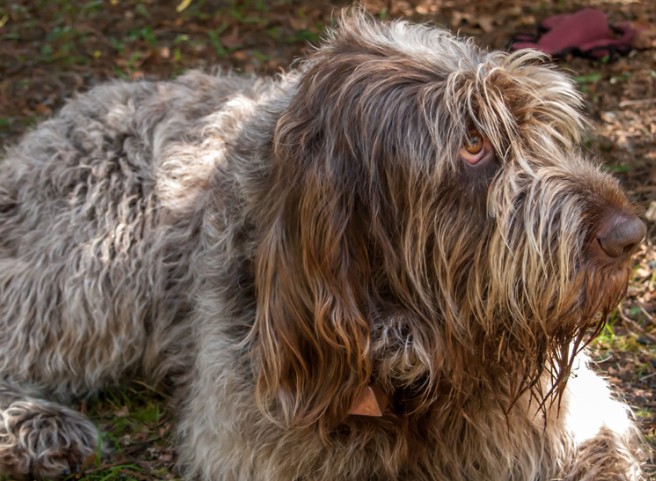
Connection over control. The NeuroBond approach turns independence into partnership by treating training as dialogue, not dominance. With patience and respect, your Spinone’s quiet brilliance comes forward naturally..
Lifestyle & Environment: Creating the Learning Ecosystem
The Thinking Dog’s Space
Your Spinone’s environment profoundly impacts their trainability. These dogs need what we call “cognitive rest zones”—spaces where they can process the day’s learning without interruption. Unlike high-drive breeds that thrive on constant stimulation, Spinoni require deliberate downtime to consolidate training.
Create an environment that supports learning:
- The Processing Place: A quiet area where your Spinone can retreat after training sessions
- Observation Posts: Elevated surfaces or windows where they can watch the world—passive environmental learning
- Rotation Enrichment: Change toys and puzzles weekly rather than daily to prevent overstimulation
- Olfactory Gardens: Safe plants like lavender and chamomile provide calming scent enrichment
Social Learning and the Multi-Dog Household
Spinoni are exceptional social learners—they absorb behaviors and responses from other dogs with remarkable efficiency. In multi-dog households, this can accelerate or complicate training depending on the dynamics. The sociable Spinone thrives when interacting with other dogs, but ensure their training partners model the behaviors you want to reinforce.
If you have other dogs:
- Train the Spinone separately initially to establish individual connection
- Use the most reliable dog as a “training assistant” for demonstrations
- Avoid competitive training scenarios that might trigger the Spinone’s avoidance humor
- Celebrate the Spinone’s unique pace rather than comparing to faster-responding dogs
Urban vs. Rural Considerations
The Spinone’s hunting heritage means they process environments differently than companion-bred dogs. Urban Spinoni need extra support managing sensory overload, while rural Spinoni might struggle with the lack of boundaries. Your training approach should adapt accordingly:
Urban Adaptations:
- Gradual desensitization to city sounds and movements
- Structured “countryside simulations” in parks
- Extra focus on check-in behaviors amid distractions
- Scent work to satisfy hunting drives safely
Rural Adaptations:
- Strong boundary training using natural markers
- Recall practice with increasing distances
- Wildlife distraction training
- GPS collar consideration for that independent streak 🧡
Senior Care: The Wisdom Years
Cognitive Considerations in Senior Spinoni
The Spinone’s thoughtful nature becomes even more pronounced in senior years. What might appear as increased stubbornness is often the brain taking longer to process information—a normal part of aging that requires patience, not correction. The good news? Spinoni maintain their learning ability well into their senior years, often developing new skills at 10, 11, even 12 years old.
Adapting Training for Senior Minds:
- Shorter Sessions: 5-minute focused sessions work better than longer ones
- Familiar Contexts: Learn new behaviors in well-known environments first
- Physical Accommodations: Adjust behaviors for arthritis or mobility issues
- Cognitive Games: Puzzle feeders and scent work keep minds sharp
- Medication Timing: If on medications, time training for peak cognitive hours
The Deepening Bond
Something beautiful happens with senior Spinoni—the invisible leash becomes almost telepathic. Years of connection-based training create a communication system so refined that verbal cues become almost unnecessary. This is the ultimate expression of the NeuroBond philosophy: a relationship so complete that training dissolves into simply being together.
Senior Spinoni often develop:
- Anticipatory behaviors (knowing what you need before you ask)
- Increased check-in frequency
- Deeper emotional attunement
- Protective alertness despite physical limitations
Honor this deepening connection by:
- Maintaining training routines for mental stimulation
- Allowing more processing time without frustration
- Celebrating small successes enthusiastically
- Adjusting physical demands while maintaining mental challenges
Common Challenges and Solutions: Troubleshooting With Understanding
Challenge 1: The “Selective Hearing” Syndrome
What’s Really Happening: Your Spinone’s brain is performing a complex cost-benefit analysis. The neural pathways for compliance exist, but competing stimuli are winning the neurological auction for attention.
NeuroBond Solution:
- Never repeat commands—one clear cue, then wait
- Make yourself more interesting than the distraction
- Use movement to capture attention (walk away, creating distance)
- Reward the moment attention shifts to you, not just full compliance
- Build “attention accounts”—bank positive interactions during calm moments
Challenge 2: The Clownish Deflection
What’s Really Happening: Humor is your Spinone’s emotional regulation strategy. When they act silly after a mistake, they’re attempting to maintain social harmony while processing embarrassment or confusion.
NeuroBond Solution:
- Acknowledge the humor with a brief smile, then redirect
- Never punish or show frustration—this increases deflection
- Create “do-over” opportunities where success is guaranteed
- Use the clownish moment as a reset button for both of you
- Build confidence through successive small successes
Challenge 3: The Slow Response Time
What’s Really Happening: The Spinone’s brain processes through multiple channels—emotional, contextual, and practical—before executing. This isn’t delay; it’s thoroughness.
NeuroBond Solution:
- Count to five after giving a cue before considering non-compliance
- Use preparatory cues (“get ready to sit”) to begin processing early
- Reward the initiation of behavior, not just completion
- Create predictable contexts where responses can be faster
- Celebrate thoughtful compliance more than quick compliance
Challenge 4: Scent Distraction Override
What’s Really Happening: When scenting, your Spinone’s olfactory bulb literally hijacks other brain functions. This isn’t choice—it’s neurological priority.
NeuroBond Solution:
- Incorporate scent into training rather than fighting it
- Teach a “sniff break” cue that gives permission for exploration
- Use scent trails to lead to training exercises
- Practice recall FROM scent, not despite it
- Create value in checking in even while scenting
Challenge 5: Inconsistent Performance
What’s Really Happening: The Spinone’s performance varies with emotional state, environmental factors, and perceived purpose more than most breeds. This isn’t unreliability; it’s context sensitivity.
NeuroBond Solution:
- Map patterns in performance (time, location, preceding events)
- Ensure emotional needs are met before training
- Vary training locations gradually to build generalization
- Always provide context for why a behavior matters
- Accept that some days are “thinking days” not “doing days”
The Training Timeline: Realistic Expectations
Weeks 1-4: Building the Foundation
Focus entirely on connection. No formal commands. Let your Spinone learn that you’re interesting, trustworthy, and worth paying attention to. Success looks like voluntary check-ins and relaxed body language around you.
Months 2-3: Establishing Communication
Begin capturing natural behaviors and naming them. Your Spinone starts understanding that certain actions have names and consequences. Expect inconsistent responses—this is normal neural pathway formation.
Months 4-6: Developing Reliability
Patterns emerge. Your Spinone begins offering behaviors without prompting. The invisible leash strengthens. You’ll notice faster processing times and more consistent responses in familiar contexts.
Months 7-12: Refinement and Generalization
Skills transfer to new environments. Your Spinone’s unique personality fully emerges within the training framework. The relationship deepens beyond training into true partnership.
Year 2 and Beyond: The Mature Partnership
Training becomes invisible—woven into daily life. Your Spinone anticipates needs, offers behaviors, and the “selective hearing” transforms into selective excellence—choosing to excel when it matters most.
Conclusion: Is the NeuroBond Approach Right for Your Spinone?
The Spinone Italiano asks us to reconsider everything we think we know about dog training. They challenge us to move beyond dominance, past simple obedience, into a realm where training becomes relationship and communication transcends commands. The NeuroBond approach isn’t just effective for Spinoni—it’s essential.
If you’re someone who needs immediate, unquestioning obedience, who values speed over thoughtfulness, or who sees training as a series of commands to be mastered, the Spinone will frustrate you endlessly. But if you’re ready to engage with a thinking partner, to celebrate the pause before compliance, to laugh at the clownish deflections while gently redirecting, then you’re ready for the profound connection that awaits.
The Spinone Italiano, trained through the NeuroBond method, doesn’t just become an obedient dog—they become a true partner. Their selective hearing transforms into selective brilliance. Their sensitivity becomes their strength. Their independence enriches rather than challenges the relationship. And that invisible leash? It becomes stronger than any physical restraint could ever be.
Remember: You’re not training a dog. You’re building a relationship with a thinking, feeling being who happens to walk on four legs. Every moment of patience, every acknowledged check-in, every respected processing pause adds another thread to the invisible leash that will connect you for life. The Spinone doesn’t need a master—he needs a partner who understands that the best training happens when we let the dog be himself while showing him how his natural instincts can harmony with our human world.
Your Spinone is waiting to show you what connection-based training can achieve. The question isn’t whether he’s trainable—it’s whether you’re ready to train differently. 🐾
Ready to begin your NeuroBond journey? Remember, the first step isn’t teaching your Spinone anything—it’s learning who he really is. In that understanding, you’ll find the key to unlocking not just obedience, but true partnership.

